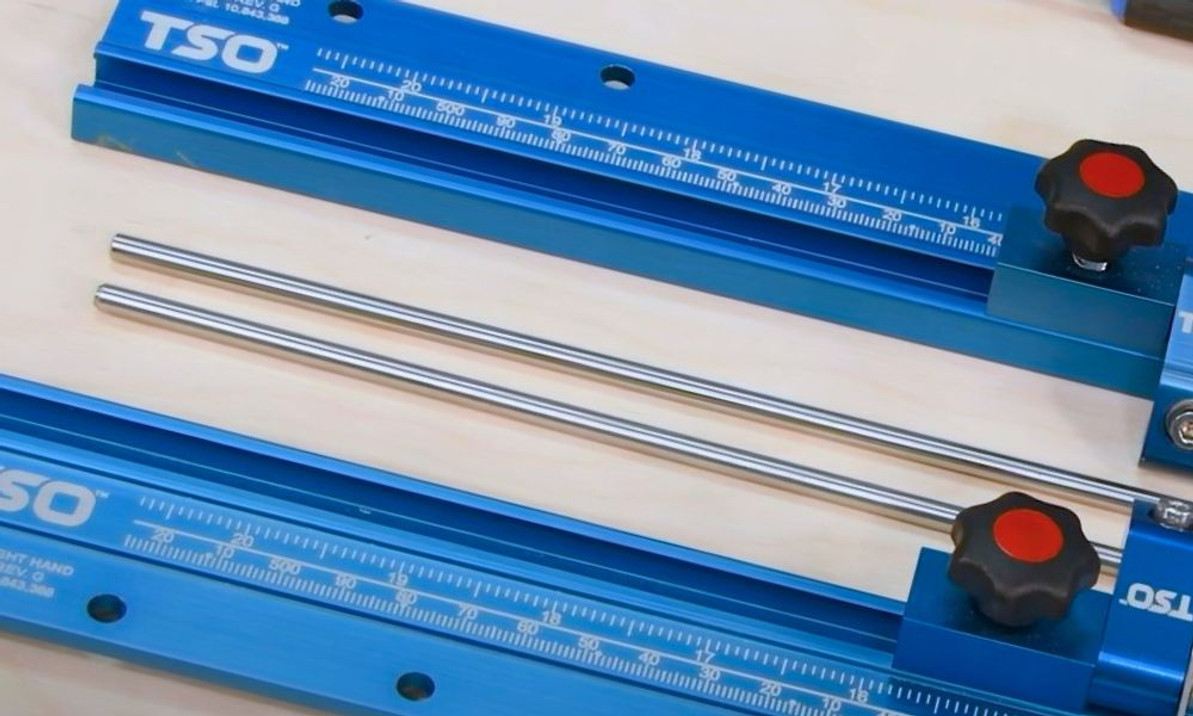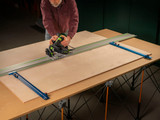3 Advantages to Using Parallel Guides With Your Track Saw
A track saw (or plunge saw) is an excellent tool for making precise and accurate cuts, especially when working with large sheets of material. Many woodworkers use a parallel guide system with their plunge track saw to enhance their capabilities. This system offers a range of benefits that improve the efficiency and accuracy of cutting tasks. Let's explore the top three advantages of using a parallel guide system with your plunge track saw.
Enhanced Precision
One of the primary benefits of a parallel guide system is its ability to provide enhanced precision. The system consists of two parallel guides that run perpendicular to the track saw’s guide rail. Along each parallel guide, an adjustable FlipStop is set to the desired cutting width.
The FlipStops serves two important purposes: Firstly, they provide a cursor that sits over the laser-engraved scale on both parallel guides, allowing you to accurately select a specific measurement. Secondly, they provide a material stop against which the left side of your workpiece abuts.
As long as both FlipStops are set and locked into position, and the workpiece is registered off the FlipStops, you achieve identical and repeatable cuts from workpiece to workpiece because you’re relying on the physical reference of the FlipStop. You’re not introducing human error that might come from manually marking or scribing each workpiece to be cut.
Increased Efficiency
Another advantage of using a parallel guide system is the increased efficiency it brings to your cutting tasks. The system eliminates the need for measuring and marking each cut, saving you valuable time as you’re batching out identical workpieces.
Once you set the FlipStops, you can make repeated cuts quickly and effortlessly, resulting in a streamlined workflow. This efficiency is particularly beneficial for projects that require casework of a common dimension, like a kitchen cabinet set consisting of multiple 24” deep panels.
Versatility and Flexibility
A parallel guide system offers versatility and flexibility regarding the types of cuts you can make. For example, many parallel guide systems feature a way of handling narrow stock; that is, workpieces thinner than the width of the track saw guide rail.
At TSO, our parallel guide system consists of "narrow stock rods" extending underneath the guide rail to provide a backstop for thinner material that is challenging to cut with track saws.
Parallel guides aren't just useful with the track saw—they're helpful in repeatably positioning your workpiece for routing operations like cutting dados, grooves, or rabbets.
Incorporating a parallel guide system with your plunge track saw brings a multitude of advantages. From enhanced precision and increased efficiency to versatility and flexibility, this system empowers woodworkers to achieve accurate and consistent cuts in a fraction of the time.
By investing in TSO parallel guides, you can take your plunge track saw's capabilities to the next level and elevate your woodworking projects to new heights.
Recent Posts
-
What Size Guide Rail Do I Need? Choosing the Right Length (and When to Use Extensions)
The scenario: you need to make a cut in that full size plywood panel sitting in the corner of your s …6th Nov 2025 -
Best Track Saw Systems: Expert Review & Advice
The track saw market has changed considerably over the past three years. Back then, your options wer …6th Nov 2025 -
Systainer Storage Guide: Organize Your Workshop Tools
Picture this: you're setting up for what should be a straightforward series of cuts, but you can't l …2nd Sep 2025




